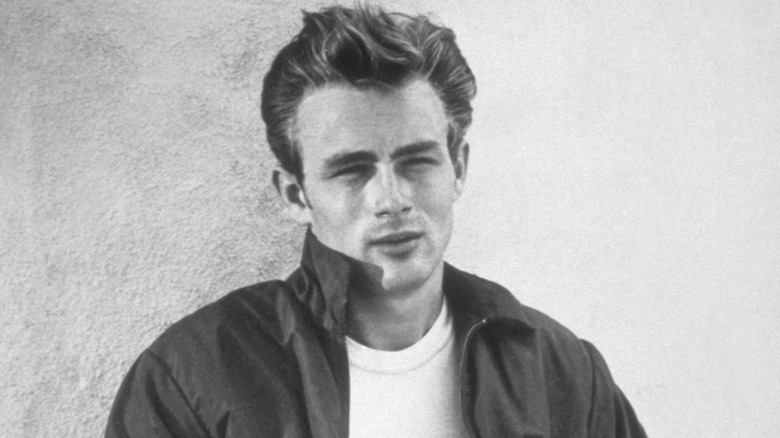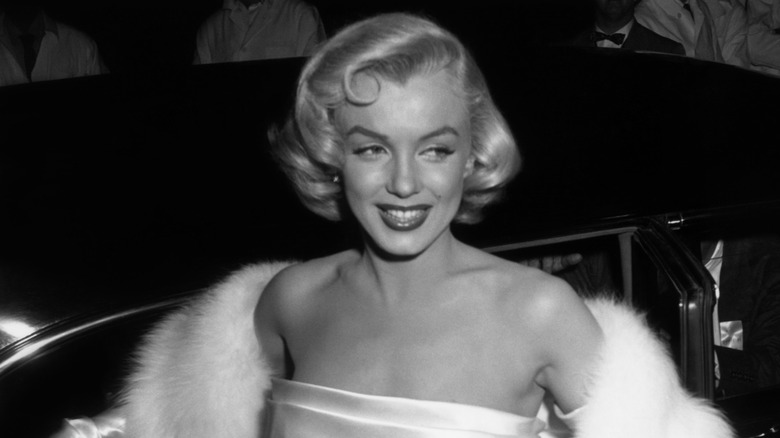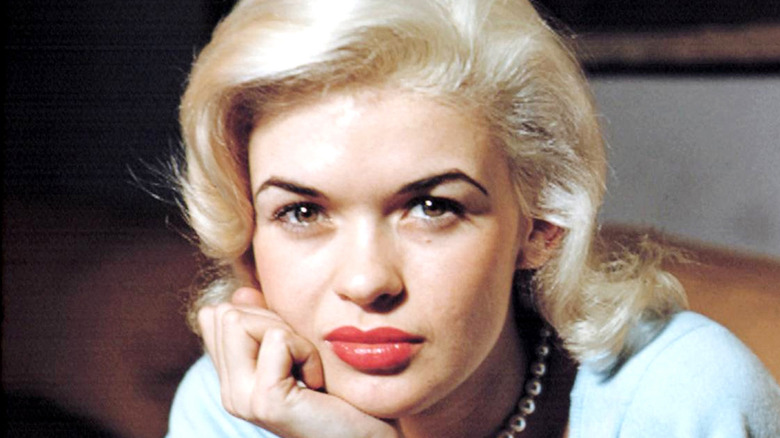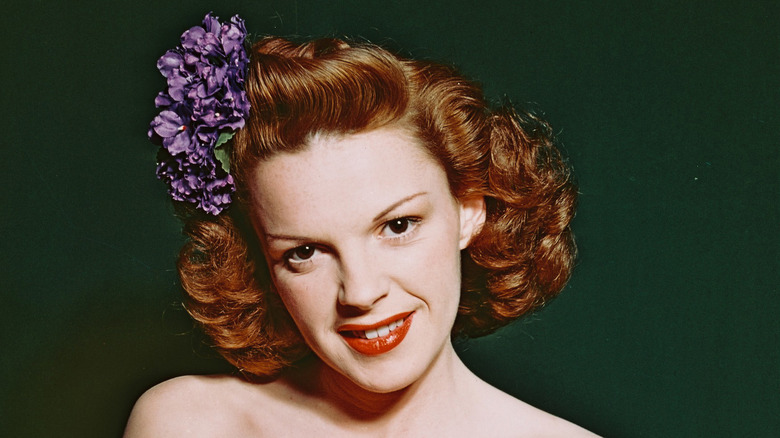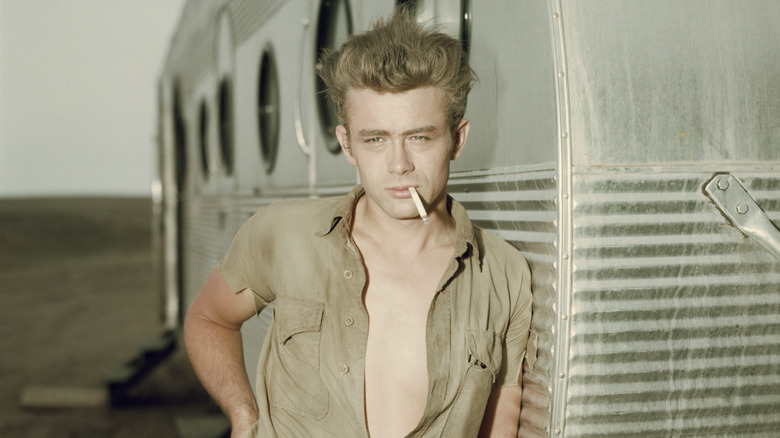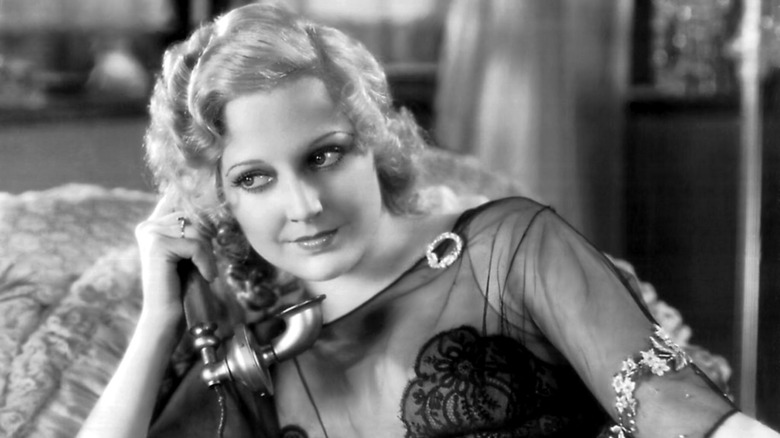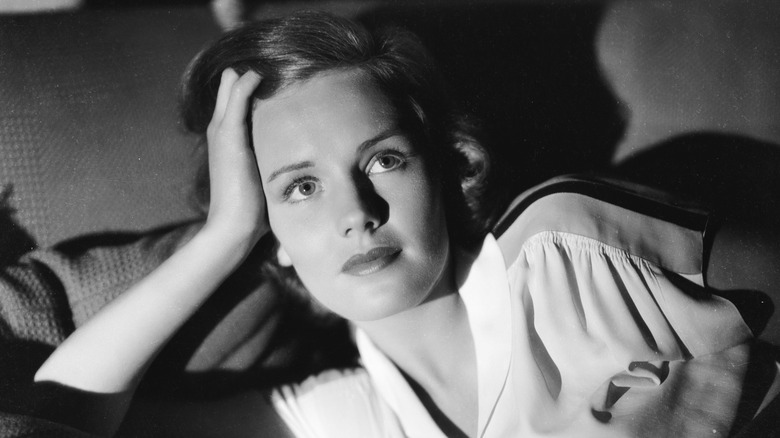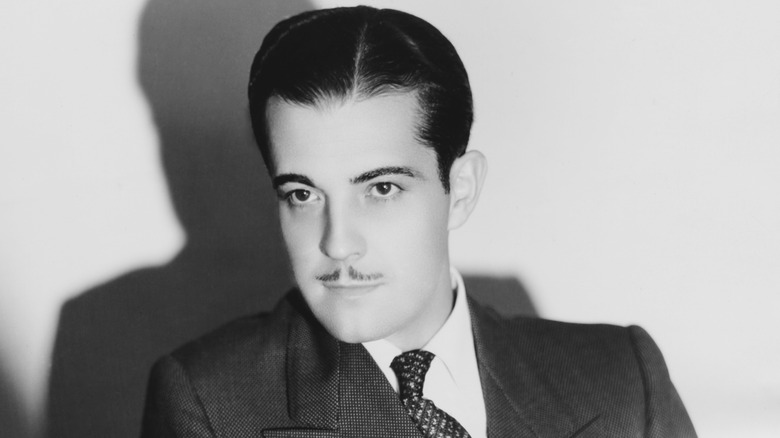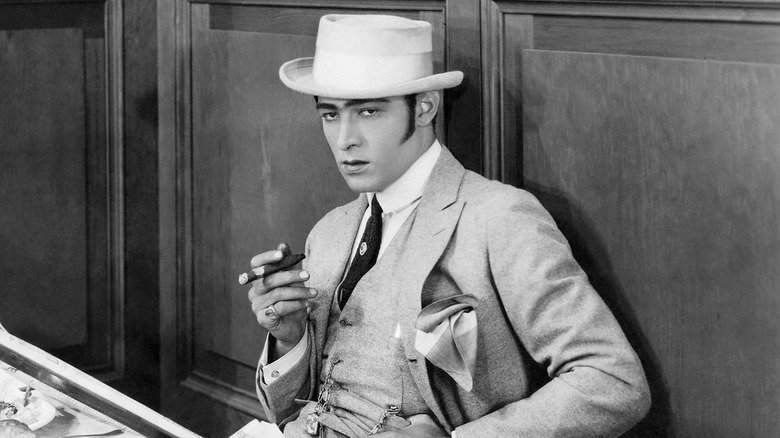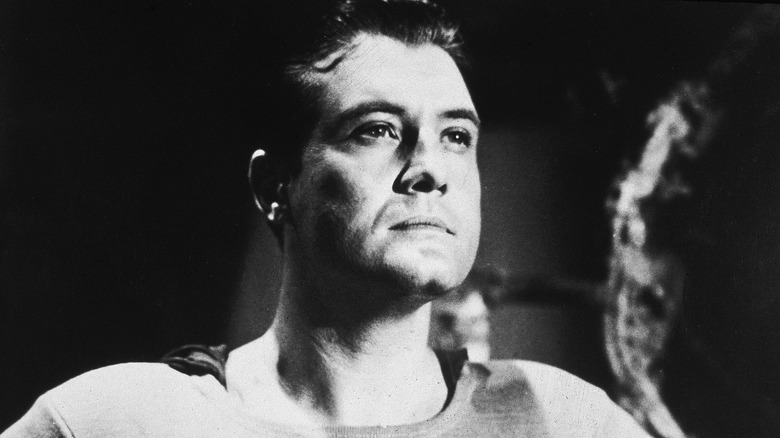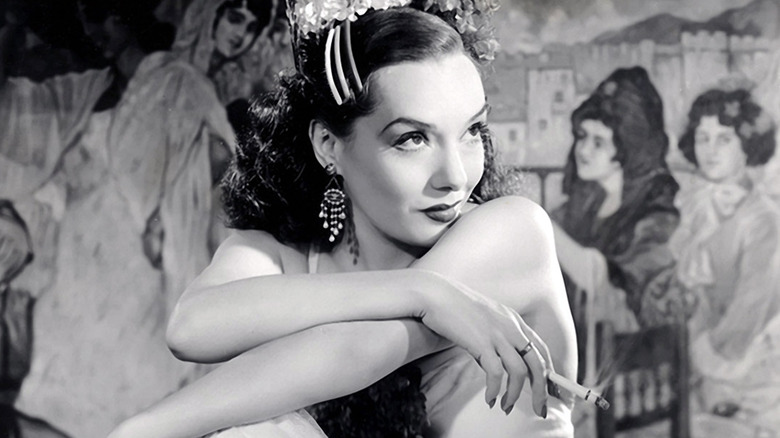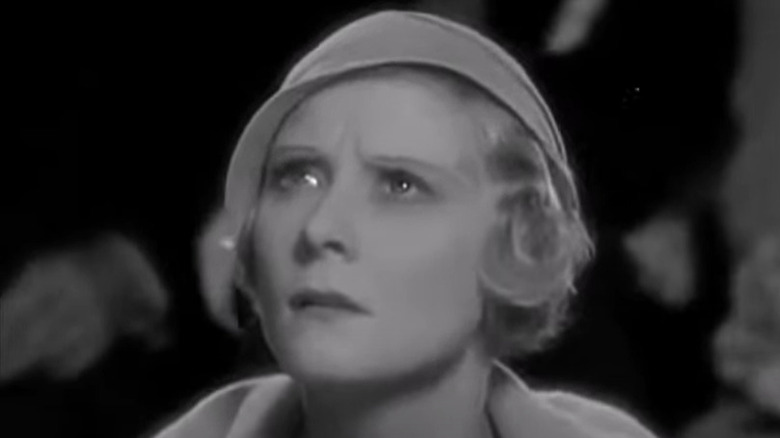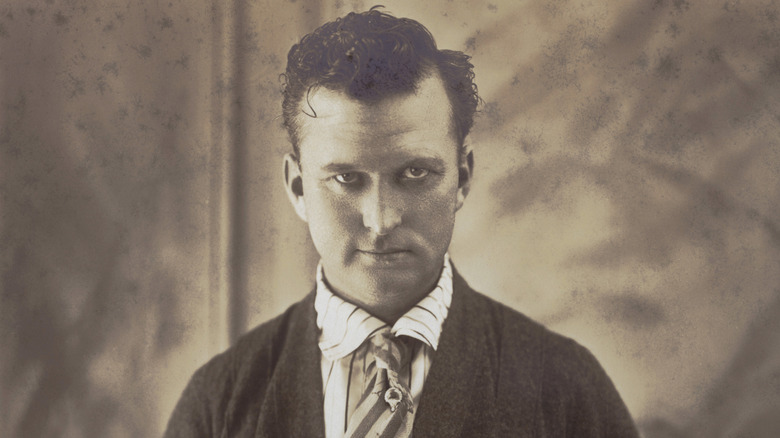The Most Tragic Deaths In Old Hollywood Explained
It's impossible to overstate the importance of Old Hollywood and how it paved the way for the modern entertainment industry. This era saw massive innovations take place in filmmaking, such as the advent of sound in movies, the transition from black-and-white to color films, and more. Old Hollywood also gave the world a plethora of classic movies that are still revered and studied today, including "Citizen Kane," "Casablanca," "Singin' in the Rain," "On the Waterfront," "Some Like It Hot," and too many others to count. It was a creatively fertile time in cinema history, and was brought about by some of the most talented filmmakers ever, like Alfred Hitchcock, Howard Hawks, Billy Wilder, and Elia Kazan, to name a few.
But one of Old Hollywood's biggest contributions to pop culture is establishing the entertainment industry as one of glitz, glamor, and extravagance. During this era, there was no shortage of gossip about cinema's biggest stars and their salacious, even deviant, lifestyles. While many of these stories were exaggerated, there's no denying the fact that, at that time, some of Tinseltown's most famous figures lived tumultuous lives, numerous of which came to calamitous ends. Let's take a look at the most tragic deaths in Old Hollywood.
Marilyn Monroe
Marilyn Monroe is a Hollywood icon who needs little introduction. Born on June 1, 1926, in Los Angeles, California, Monroe had a turbulent childhood, bouncing around from orphanages to foster families, and being sexually assaulted multiple times. When she became an adult, she cultivated a career as a model, which led to her landing parts in several motion pictures. Her roles capitalized on her seductive demeanor, which established her as a bona fide sex symbol of the 1950s. However, she became disenchanted with always playing the flirtatious blonde, so she decided to develop her acting under the tutelage of Lee Strasberg at the Actors' Studio in New York City.
Unfortunately, before Monroe could fulfill her dream of becoming a serious actress, she was found dead on August 5, 1962, at the age of 36. The cause of her death was the ingestion of a lethal mix of Nembutal and chloral hydrate. These drugs — which were prescribed for her anxiety and insomnia, respectively — highlight just how bad her mental health was during her final years, which included a stay at a psychiatric clinic. Monroe's alleged connections to the Kennedy family have sparked innumerable conspiracy theories about how her seemingly accidental overdose may not have been accidental at all. We may never fully know what she was going through or what she was involved in during her last days, but there's no doubt that her passing left a huge hole in Hollywood that no actress has filled since.
If you or anyone you know has been a victim of sexual assault, help is available. Visit the Rape, Abuse & Incest National Network website or contact RAINN's National Helpline at 1-800-656-HOPE (4673).
Jayne Mansfield
Jayne Mansfield is one of the only contemporaries of Marilyn Monroe who could compete with her in terms of sex appeal and ability to generate salacious headlines. From a young age, it was clear that Mansfield was born to entertain; she took music and dance lessons as a child, followed by appearances in local plays. She eventually moved to Los Angeles to pursue a career in acting, making her small screen debut in the Lux Video Theatre series, followed by small roles in feature films. It wasn't long before she became a top actress, attracting as much attention for her outrageous public wardrobe malfunctions as for her films.
But alas, Mansfield's very public life came to an untimely end on June 29, 1967, in the form of a terrible car accident near New Orleans, Louisiana. The voluptuous actress was on her way to the Big Easy where she was scheduled to make an appearance on TV. Also in the same car as Mansfield were her driver Ronald B. Harrison, her lawyer Samuel S. Brody, and her children Mickey, Zoltan, and Marie, who she had with her ex-husband, actor Mickey Hargitay. While Harrison and Brody died along with Mansfield, her children survived, though with various injuries.
Judy Garland
Few entertainers have lived a life as tempestuous as that of Judy Garland. Born on June 10, 1922, in Grand Rapids, Minnesota, Garland displayed an early talent for singing. Her family moved to Los Angeles where she further developed her skills as an actress and singer, eventually landing a deal with MGM when she was only 13 years old. Garland starred in several "Andy Hardy" films with Hollywood icon Mickey Rooney, but her big break came in 1939 when she played Dorothy in "The Wizard of Oz," for which she received a special Academy Award. From then on, Garland worked nonstop, appearing in such classic films as "Strike Up the Band" and "A Star Is Born," and performing in various Broadway productions.
But the constant pressure of always having to look, sing, and act her best both on stage and on screen — as well as a dramatic personal life — took its toll on Garland, and she spent much of her adulthood on various medications to help with her anxiety and sleep problems. She passed away on June 22, 1969, from an accidental overdose of sleeping pills, resulting in quinalbarbitone poisoning. Despite the rough state she was in during her final years, there was no evidence that Garland's death was intentional; according to The Guardian, coroner Gavin Thurston said that, "This is quite clearly an accidental circumstance to a person who was accustomed to taking barbiturates over a very long time."
James Dean
It's a testament to just how massive a talent James Dean was when you consider how brief his career in film was. Born on February 8, 1931, in Marion, Indiana, Dean eventually ended up in Los Angeles, where he forged his acting skills under James Whitmore. He appeared in several commercials and landed small roles in various TV shows before getting his first big break in 1955's "East of Eden," garnering him his first Academy Award nomination. Dean followed this up with the teen movie classic "Rebel Without a Cause," which established him as the face of troubled youth in the 1950s. He would only make one other film, "Giant," for which he received his second and final Oscar nomination.
The reason for Dean's truncated film career is his untimely death on September 30, 1955, when he was only 24 years old. The young actor died in a car crash in a small town near Paso Robles, California, as he was on his way to Salinas to participate in an auto race. Dean was driving his brand new Porsche, which he decided to take at the last minute instead of his station wagon. A lover of auto racing, Dean was forbidden from joining any races while shooting the film "Giant," which is why he was so eager to take his new wheels for a spin when production wrapped up.
Thelma Todd
Thelma Todd was born on July 29, 1905 (some sources say 1906), in Lawrence, Massachusetts, and got her start in show business as a model. She was eventually discovered by a Hollywood talent scout and was sent to New York City to add acting to her résumé. Todd appeared in numerous silent films, but when movies started to convert to "talkies," the number of roles she scored dramatically increased. Comedy was her forte, having appeared in films with such slapstick icons as Laurel and Hardy, the Marx Brothers, and Buster Keaton, though she often appeared in dramas as well. While Todd continued her impressive career as an actress, she also started a side business in the form of Thelma Todd's Sidewalk Café, a popular Pacific Palisades restaurant.
To the world at large, Todd was living an amazing life. However, she was found dead in her car in a garage on December 16, 1935. The cause of her death was carbon monoxide poisoning and seemed to be accidental, but the events surrounding her last days have called that explanation into question. As revealed in her Los Angeles Times obituary, the actress was being extorted for $10,000, she was in good spirits while attending a party the night before her death, and there were some other injuries on her body that hinted at foul play. Today, Todd's death is still very much a mystery.
Frances Farmer
Hailing from Seattle, Washington, Frances Farmer became interested in theater while in college and even moved to New York City to pursue a stage career. However, she attracted the attention of Paramount Pictures, which signed her to a contract and cast her in her very first feature film, 1936's "Too Many Parents." Farmer followed this up with even more roles, garnering considerable acclaim for her performance in "Come and Get It." But her film career was derailed by erratic behavior, caused by her growing alcoholism and mental health decline. She spent much of her adulthood in and out of various institutions and the households of family members.
This was a tumultuous time for Farmer, who recounted multiple instances of rape and abuse while institutionalized in her autobiography, "Will There Really Be a Morning?" She experienced a bit of a resurgence in the late 1950s and early 1960s with some TV and stage appearances, only to fall on hard times again. Farmer died from esophageal cancer on August 1, 1970, at the age of 56. Her hectic life has been immortalized in the 1982 Oscar-nominated film "Frances," as well as the Nirvana song "Frances Farmer Will Have Her Revenge on Seattle," Kurt Cobain's morose tribute to a life filled with needless suffering.
If you or someone you know needs help with mental health, please contact the Crisis Text Line by texting HOME to 741741, call the National Alliance on Mental Illness helpline at 1-800-950-NAMI (6264), or visit the National Institute of Mental Health website.
Ramon Novarro
Ramon Novarro was born on February 6, 1899, in Durango, Mexico, before moving to Los Angeles with his family. It was there that he cultivated his skills as an entertainer, dabbling in dance and music, eventually becoming an extra in various movies. This minor acting work led to him landing the role of Rupert of Hentzau in 1922's "The Prisoner of Zenda," which really gave the world a taste of his dashing screen presence. Novarro's persona as a "Latin lover" ensured many big roles well into the era of "talkies," though the mid-1930s onward saw him segue away from film and into theater, along with various television projects in the 1960s.
Unfortunately, Novarro suffered an incredibly shocking end to his life. Two young hustlers — who had acquired the actor's phone number from a mutual acquaintance — set up a social meeting at night on October 30, 1968. The 69-year-old Novarro welcomed the two men into his home for what started off as a pleasant evening. However, after the consumption of alcohol, the guests demanded their host give them $5,000 that they believed was in the house. Novarro claimed that he didn't have that much in his home, which prompted the two men to brutally beat him to death and trash his dwelling. The actor's demise caused a massive media stir, becoming a tragic coda to the life of one of early cinema's greatest leading men.
Rudolph Valentino
Before there was Ramon Novarro, there was Rudolph Valentino, the first real "Latin lover" icon of Hollywood. Born Rodolfo Guglielmi on May 6, 1895, in Italy, he was a rebellious yet impulsive young man who learned almost every skill of high society except for that of saving money. Still, he managed to make a living in New York City as a dancer, but moved to Los Angeles in 1917 after getting embroiled in various scandals. Valentino appeared in an assortment of minor film roles, but it was his casting in 1921's "The Four Horsemen of the Apocalypse" that really popularized him. He followed up on this success with the starring role in "The Sheik," and his place in film history as a dashing leading man was secured.
Few actors' deaths have caused as much disruptive mourning as that of Valentino. His passing on August 23, 1926, from a ruptured ulcer sent the world into a frenzy as countless fans caused considerable damage in the streets just to get a peek at the deceased actor while his body was at Frank E. Campbell's funeral home in Manhattan. So rabid was his fanbase that dozens of them even attempted suicide in the wake of Valentino's death. Like his life, his send-off was extravagant and outrageous, as his funeral was attended by numerous celebrities, and actress Pola Negri fainted multiple times throughout the service for the benefit of the press.
George Reeves
Much like the Man of Steel he'd later play, George Reeves hailed from a small Midwest agricultural town. His parents divorced when he was still a baby, and so his mom took him to Pasadena, California, to start a new life. As Reeves grew, so did his love for the arts, and he took up music and acting while in college. This led to him joining the prestigious Pasadena Community Playhouse, where he honed his acting talents. Reeves landed a supporting role in "Gone With the Wind," which opened the door to him appearing in more films. While the late 1940s saw him acting in mostly B-movies, he kicked off the 1950s with his most defining role yet, that of Clark Kent-slash-Superman in the popular TV series "The Adventures of Superman."
Reeves' well-documented frustration at being relegated to children's TV programming has made it easy for the masses to assume that was what led to his death by suicide on June 16, 1959. However, the details of his death have made many wonder if foul play may have been involved. For example, there was a group of people having a party downstairs while he was upstairs allegedly carrying out that final act; the witnesses claimed to have heard only one gunshot, yet there were multiple bullet holes found around the room that he died in. Had Reeves' affair with the wife of infamous Hollywood "fixer" Eddie Mannix led to his demise? The mystery persists, even today.
If you or anyone you know is having suicidal thoughts, please call the National Suicide Prevention Lifeline by dialing 988 or by calling 1-800-273-TALK (8255).
Lupe Vélez
Lupe Vélez may not have the name recognition of other early-Hollywood starlets, but that doesn't diminish her considerable importance in cinema history. Originally from Mexico, she rose to prominence after a memorable role in the 1927 Douglas Fairbanks vehicle "The Gaucho." Vélez's sensual screen presence and versatility allowed her, one of the few Latina actors in Hollywood at the time, to appear in a wide range of movies; whether it was acting alongside Laurel and Hardy in slapstick comedies or appearing in dramas directed by D.W. Griffith or getting top billing in musicals, there was almost nothing that Vélez couldn't do. And who could forget her signature series of "Mexican Spitfire" films?
Vélez was well known for a tempestuous personality that caused no shortage of turmoil in her personal and professional lives, so it's no wonder that her death was just as melodramatic. After becoming pregnant by her boyfriend Harald Ramond, she demanded that he marry her. Ramond refused, which devastated Vélez so much that she overdosed on sleeping pills, leaving behind a note that read (per the Australian Associated Press, via The Sydney Morning Herald), "How could you, Harald, fake such a great love for me and our baby when all the time you didn't want us? I see no other way out for me, so good-bye and good luck to you." Her shocking end was exacerbated by Kenneth Anger's salacious and mostly fictional book "Hollywood Babylon," which started the unfortunate rumor that the actress drowned in a toilet followed by a trail of vomit.
If you or anyone you know is having suicidal thoughts, please call the National Suicide Prevention Lifeline by dialing 988 or by calling 1-800-273-TALK (8255).
Peg Entwistle
Out of all the careers listed in this article, Peg Entwistle's is the shortest. The actress was born in Wales in 1908 and lived in London before moving to New York City. It was there that Entwistle pursued acting, eventually getting cast in various Broadway productions. She joined the New York Theatre Guild with whom she established herself as a legitimate actress, even getting featured in The New York Times and the Oakland Tribune. Within a few years, the Theatre Guild headed westward, which led to Entwistle ending up in sunny Southern California. She soon found herself in a miniscule part as Hazel Cousins in 1932's "Thirteen Women." It would be her only film credit.
This role wasn't enough to entice studios into a bidding war for Entwistle, and she wasn't able to sign a deal with RKO Pictures. After failing to become a working actress, she climbed to the top of the "H" of the Hollywood sign (which read "Hollywoodland" at the time) and jumped off, ending her life on September 16, 1932. Just prior to the fateful act, Entwistle told her uncle, who she was living with, that she was off to "rendezvous with a friend." Following her death, her body was discovered by a hiker, who also found her purse containing a suicide note that read (per the Associated Press, via The Lewiston Daily Sun): "I am afraid I am a coward and I am sorry for many things. If I had only done this long ago I could have saved a lot of pain. P.E."
If you or anyone you know is having suicidal thoughts, please call the National Suicide Prevention Lifeline by dialing 988 or by calling 1-800-273-TALK (8255).
Thomas Ince
Thomas Ince's name may not sound familiar to most film fans, but his influence on the medium is impossible to overstate. Born on November 16, 1882, in Newport, Rhode Island, he got his start in the motion picture industry by working for D.W. Griffith's studio. Ince started off as a director of one-reel shorts before moving on to bigger projects, helping to establish the Western as a genre in and of itself, with the help of cowboy icon and actor William S. Hart. But that wasn't Ince's biggest contribution to cinema — what he really gave the world was the modern system of filmmaking wherein each stage of a production was handled by separate teams.
Just like the death of George Reeves, Ince's death seems cut-and-dried on its surface but harbors several curious details that have prompted continued debate over the decades. The official story is that Ince was on business magnate William Randolph Hearst's yacht, the Oneida, to celebrate a partnership. However, Ince became extremely ill and had to be taken back to shore to receive medical attention, and died shortly thereafter on November 19, 1924. Numerous circumstances — including suspicious guests invited to the party on the yacht, the seeming rush to cremate Ince's body, and alleged love triangles — have fueled the notion that the filmmaking pioneer's death was more than just the untimely flaring up of angina and stomach ulcers.
